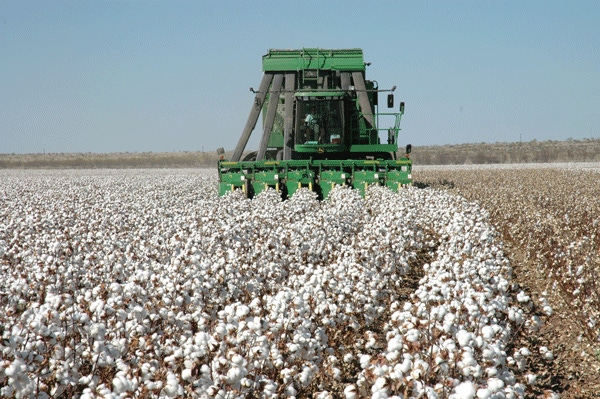
Cotton took a wild ride in 2011 2011
• When all the accounting is done, U.S. cotton growers will likely end up losing more than 5 million acres of 2011 cotton to weather-related problems.• Despite record high prices and near record planted acreage, U.S. growers will produce less cotton than they did in 2010 — perhaps as much as two million bales less.
January 5, 2012

Last year was a wild ride for cotton growers, but unfortunately Mother Nature was driving the bus and out of control.
Speaking at the Beltwide Cotton Conference, University of Florida Scientist David Wright says, “We started the year with high expectations and by planting time historic high prices further fueled this enthusiasm.”
Wright says U.S. cotton growers planted 14.7 million acres in 2011 — more than two million acres more than projected by USDA planting intention surveys.
When all the accounting is done, U.S. cotton growers will likely end up losing more than 5 million acres of cotton to weather-related problems.
Despite record high prices and near record planted acreage, U.S. growers will produce less cotton than they did in 2010 — perhaps as much as two million bales less.
It’s not unprecedented for growers to lose a million acres or so over the past 20 years to weather. However, losing five million acres is unprecedented, Wright says.
Thanks to extremely high yields in California and Arizona and average to good yields in parts of the Mid-South and Southeast, cotton growers will end up with a respectable yield of more than 770 pounds per acre.
The 2011 season got off to an inauspicious start with the record flooding along the Mississippi River. Blowing up of a levee got national attention and created an early season nightmare for growers in Missouri, Tennessee, Arkansas and Mississippi.
Wright says in some of the hardest hit areas in the Delta growers faced in one season crop losses to flooding, drought, heat, windstorms, hailstorms and even an earthquake.
Most expensive in history
The sum total of weather related losses Beltwide will likely make the 2011 crop the most expensive in history to produce.
Replanting and weather-related problems delayed planting in the Southeast and Delta, resulting in extremely late first bloom — in some cases well into September. The expected result was a loss of productivity due to fall frost damage.
Going into planting season, soil moisture in the Southeast and Southwest was already low. In contrast, much of the Mid-South was flooded, creating uncharacteristic lack of uniformity in the 2011 cotton crop.
April and May of 2011 temperatures were actually a little lower than normal, but that was soon to change in a big way, especially for much of the Southwest. In June the heat came and it didn’t stop in many cases until well into harvest season.
Throughout the summer months temperatures remained 4-5 degrees higher than normal, which can be catastrophic for crops. Extended heat and drought prevented some cotton from being planted, but wreaked havoc on early-season crops in the lower Southeast and especially in the High Plains of Texas and Oklahoma.
A late August Hurricane and tropical storm brought some much-needed relief from the heat and drought in the Carolinas and Virginia. Unfortunately, it also brought damaging winds, widespread hardlock and generally reduced an outstanding cotton crop in the region to just average.
Typically the Gulf Coast states get relief from heat and drought from Hurricanes, but the La Nina weather pattern that was in place in 2011 sent virtually all the summer storms out to the Atlantic and away from the mainland.
Going into the 2012 season most states are still well below normal in moisture. “In Florida, for example, Wright says, we are down by about 30 inches from normal.”
Despite the bitter taste of having so much of a promising, highly valued cotton crop destroyed by weather, cotton growers are going into the 2012 season with an optimistic outlook.
There will be some new pesticides available this year and some high yielding varieties available to farmers. “By and large most farmers are looking forward to planting cotton this year. They have some good tools to use for this year’s crop,” Wright says.
Though they have moderated from record highs, prices remain good, hovering around 90 cents a pound, and that’s still competitive with other crop options, the University of Florida researcher says.
About the Author(s)
You May Also Like





